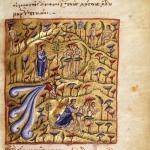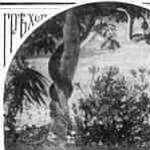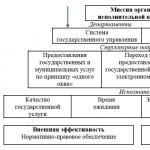Card index
didactic games and exercises
in the preparatory group
"Mastering the Basics
original charter"
Didactic game
"Sound Caps"
Target : Develop sound analysis skills. Learn to form forward and backward syllables.
Progress: 2 children take part in the game. They choose their beetle and goose hats. Leaves and flowers cut out of colored paper are laid out on the floor. Letters representing vowel sounds are written on them. According to the teacher’s instructions “The sun is waking up,” children move around the room, imitating the buzzing of a beetle and the hissing of a goose. At the teacher’s signal, the children stop on the leaves and flowers, pronouncing the syllables with their own sounds in turn. For example: The beetle stopped at a flower with the letter “A”, the child pronounces the syllable “Zha”.
Didactic game
"Finish the word"
Target:
Progress: Children stand in a circle. Teacher with a ball in the center: “Children, now you will finish the word I started. I will throw the ball to any of you and say the beginning of the word, and you must throw the ball back to me and say its end (kosh - ka, gla - for).
Didactic game
"Guess the word"
Target: Develop children's ability to divide words into syllables.
Progress: The teacher invites the children to guess the words, while tapping 2 times. Children select words with a given number of syllables. For the correct answer, the child receives a chip.
Didactic game
“Let’s weave a wreath of sentences”
Target: Exercise children in composing sentences, united thematically, to develop verbal attention.
Progress: The teacher makes a sentence. Children name the last word and come up with a new sentence with it. For example: Seryozha is reading a book. The book is on the table.
Didactic game
“Name the words in which the second sound is a vowel (consonant).”
Target: Strengthen the skills of sound analysis of words, practice distinguishing vowels and consonants, and activate the vocabulary.
Progress: The teacher asks the children to remember words whose second sound is a vowel or consonant. Children compete in rows. The row that comes up with the most words wins.
Didactic game
"Magic Cubes"
Target: Strengthen children's ability to determine the place of sound in a word, perform phonemic analysis and synthesis of words, develop auditory and visual memory, as well as visual perception.
Material: Cubes on each side of which depict objects familiar to children.
Progress: The child is asked to collect some word, for example “elephant”. Pay attention to the first sounds of words - names of objects. The child first finds a cube, on one of the faces of which there is an object whose name begins with the sound [s]. Then he searches on the faces of the next cube for an image of an object whose name has the first sound - [l], [o], [n].
Didactic game
"Fun Train"
Target: Improve the skill of sound analysis, strengthen children’s ability to determine the number of sounds in a word.
Material: Each child has an object picture in his hands - a ticket.
Progress: The teacher asks each child to determine the number of sounds in his word and put the picture in the correct carriage corresponding to the number of sounds in the word (how many boxes, so many sounds).
Didactic game
"Necessary Signs"
Target: Develop children's speech apparatus, practice diction, consolidate ways of denoting sentences.
Progress: The teacher names the proposal. Children determine with what intonation it was pronounced, and accordingly, they raise a card with the desired sign.
Didactic game
"Find Brother"
Target: Strengthen children's ability to identify the first sound in a word, distinguish between hard and soft consonant sounds.
Material: Subject pictures
Progress: The teacher puts object pictures in one row. Children must arrange the pictures in two rows. In the second row there should be pictures such that the first sounds of the words are brothers of the first sounds of the words of the first row.
For example: Butterfly, first sound [b]. I’ll put the squirrel, the first sound in this word is [b"], [b] and [b"] - brothers.
Children take turns coming up, naming objects, the first sounds of words, and if they have chosen the correct pair, place the picture under the top row.
Didactic game
"Red White"
Target: Continue to teach children to intonationally isolate any sound from a word and determine its place in the word.
Material: Each child has a red and white circle.
Progress: The teacher names the words. If the children hear the sound [s] in the word, then they raise a red circle; if there is no given sound, they raise a white one. Sounds: [f], [sh], [sch"].
Didactic games for teaching literacy (preparatory group)
"Come up with a word"
Goal: teach the basics of sound analysis, develop
phonemic hearing.
Methodology.
In response to a certain sound, the child names words that he knows. Can
compete to see who can name the most words.
"Clapperboard"
Goal: to develop phonemic hearing, the ability to correlate a sound with its graphic image (letter).
Methodology.
The teacher gives instructions.
Now I will tell you the words, and as soon as you hear a word that contains the sound “k,” clap your hands once. If you hear the sound “g” in a word, clap twice. The exercise must be performed at a slow pace, gradually increasing the speed. Speak clearly and loudly so that the child hears all the sounds being spoken. For example, cow, jelly, mountain, mink, carousel, guitar, boot, bitch, viper, board.
"One step, two steps"
Goal: learn to divide words into syllables, perform sound-letter analysis of words. Develop phonemic awareness, the ability to correlate a sound with its graphic image (letter).
Didactic material (equipment): typesetting panel in the form of steps, cash register of letters. Red squares represent vowel sounds, blue are hard consonant sounds, green are soft consonant sounds. Subject and subject pictures, graphic diagrams of sentences.
Methodology.
Option 1.
The teacher offers the children a picture that they must name. Then they divide this word into syllables, count them and show them on the syllable line.
Option 2.
The teacher puts the picture in the top window and invites the children to perform a sound analysis of the word.
Option 3.
Children independently perform a sound analysis of a word based on the picture provided by the teacher. Each sound is then labeled with a letter.
Option 4.
A plot picture is displayed in the top window. The teacher invites the children to make a sentence based on it. Then the children count the number of words in it and display a graphic diagram of the sentence.
"On the waves of sounds and letters"
Purpose: to teach the basics of sound analysis, help memorize letters, and develop phonemic awareness.
Didactic material (equipment).
Planar images of two boats. The first red boat with a lowered sail symbolizes vowel sounds (when pronounced, the air stream does not meet an obstacle. The second boat with two raised blue-green sails and a bell on board. This is a symbol of consonant sounds (when pronounced, the air stream meets an obstacle by “inflating sails"), bell - ringing sounds, blue sail - hard sounds, green sail - soft sounds. A set of magnetic letters.
Methodology.
You can use this game in literacy classes during familiarization with letters, and also use it for individual work in your free time or to consolidate the material covered.
Option 1.
In literacy classes, while learning about the next letter, children analyze its sound, characterize the sound, identifying a vowel or consonant, and form them as “waves” for boats.
Option 2.
The teacher names the sound, invites the child to designate it with a letter, find the desired boat, explaining his choice.
"Who to visit"
Goal: development of internal planning.
Methodology.
Several subject pictures depicting animals, birds or fish are attached to the board. All pictures are connected to each other by paths. All animals should visit each other. In order to find out who will go first, children complete a task.
1) The first person to visit will be the one whose name has one syllable and the first sound is a hard consonant.
2) He will go to visit someone whose name has two syllables and the first sound is a soft consonant.
3) They will go to visit each other, the name has 3 syllables.
“The sharpest” or “Who is faster”
Goal: development of voluntary attention and memory.
For this game you need to have a set of cards with letters and syllables. Count for a few seconds for the children: “One, two, three—look carefully!” -one or another letter is shown. Then among others 7-8 letters. The first one to name and show the correct letter wins.
Options are possible: similar work can be done with syllables.
Tasks:
Find a syllable with the same consonant, but so that the consonant sound is soft. For example, the syllable “NA” - we find “NYA”.
"Butterflies in the clearing"
Goal: learning to compose and read syllables.
Methodology.
For this game you need to have two green meadows and 6-8 subject pictures depicting colorful butterflies. Consonants and vowels are attached to the back of the butterfly. Butterflies with consonants are in the first clearing, and those with vowels are in the second. Children are asked to catch one butterfly from each clearing, turn them over, compose and read the resulting syllable.
Options are possible: you can attach ready-made syllables to the back of the butterflies. Ask the child to catch a butterfly, read the syllable, complete it to form a complete word using the letters on the typesetting canvas.
Zhuikova Anna Viktorovna, teacher of the highest category, teacher - speech therapist of category II, municipal preschool institution No. 1 kindergarten “Cheburashka”, SAKHA (Yakutia) Eldikan village.
Explanatory note. The prerequisites for successful literacy learning are formed in preschool childhood. It has been established that the age of the fifth year of life is optimal for the education of a special (higher) form of phonemic hearing, phonemic perception and the development of a child’s orienting activity in sound reality.
It is known that sound-letter analysis is based on clear, stable ideas about the sound composition of a word.
The presented didactic games allow children to be introduced into the world of sounds, letters and reading in a playful, non-intrusive way and to develop phonemic awareness. They are important for developing the sound culture of children’s speech, preparing them for learning to read and write, and contribute to the general speech development of preschoolers.
The teacher can use them both in class and during individual work and in the independent activities of each child. The typesetting canvas can be mobile, as for example in the game “Magic Rays”, and can be used in literacy classes and mathematics classes. A simulator for the development of speech breathing can become an element of an ecological corner.
“One step, two steps”
(for children 5 – 7 years old)
Target: Learn to divide words into syllables, perform sound-letter analysis of words. Develop phonemic awareness, the ability to correlate a sound with its graphic image (letter).
typesetting panel in the form of steps, cash register of letters. Red squares represent vowel sounds, blue boxes represent hard consonant sounds, and green boxes represent soft consonant sounds. Subject and subject pictures, graphic diagrams of sentences.
Methodology:
1 option. The teacher offers the children a picture that they must name. Then they divide this word into syllables, count them and show them on the syllable line.
Option 2. The teacher puts the picture in the top window and invites the children to perform a sound analysis of the word.
Option 3. Children independently perform a sound analysis of a word based on the picture provided by the teacher. Each sound is then labeled with a letter.
Option 4. A plot picture is displayed in the top window. The teacher invites the children to make a sentence based on it. Then the children count the number of words in it and display a graphic diagram of the sentence.

“On the waves of sounds and letters”
(for children 6 – 7 years old)
Purpose: To teach the basics of sound analysis, to help remember letters. Develop phonemic awareness.
Didactic material (equipment): Planar images of two boats. The first red boat with a lowered sail symbolizes vowel sounds (when pronounced, the air stream does not encounter an obstacle). The second boat with two raised blue-green sails and a bell on board. This is a symbol of consonant sounds (when pronounced, the air stream meets an obstacle “inflating the sails”), a bell - ringing sounds, a blue sail - hard sounds, a green sail - soft sounds. Set of magnetic letters.
Methodology: You can use this game in literacy classes during familiarization with letters, and also use it for individual work in your free time or to consolidate the material covered.
1 option: In literacy classes, while learning about the next letter, children analyze its sound, characterize the sound, determining whether it is a vowel or a consonant, and form them into “waves” for boats.
Option 2: The teacher names the sound, invites the child to designate it with a letter, find the desired boat, explaining his choice.


“Simulator for the development of speech breathing”
Target. Develop speech breathing, consolidate knowledge about seasonal changes in nature.
A plastic base (clothes dryer), which is hung at the height of the child and is designed in accordance with the time of year. Winter - snowdrift, snowflakes. Summer – clearing, flowers, insects. Spring – bushes, leaves, birds. Autumn – clouds, yellow leaves.
Methodology: Depending on the time of year, the teacher models the situation (a winter blizzard swirled snowflakes, butterflies flew to the flowers, a breeze tore off yellow leaves, migratory birds flew in, etc.) The child blows on light figures suspended from the simulator, taking a deep breath and exhaling smoothly. Or several exhalations following the teacher’s instructions. The exercise lasts no more than 3 – 5 minutes.
It should be borne in mind that in all games that develop breathing, as in breathing exercises, the rule is strictly observed: inhalation coincides with the expansion of the chest, exhalation with its narrowing. Children learn to inhale while speaking, only through the mouth and not through the nose.

“Magic rays”
(literacy training)
Target: Teach syllabic reading.
Didactic material (equipment): A typesetting canvas with the image of the sun, a box of letters.
Methodology:
Option 1. Vowels are placed in the pockets at the ends of the beams, and consonants are placed in the center. Children read forward and backward syllables.
Option 2. Cards with syllables are placed in pockets. Children read words.
Option 3. Children independently select letters, syllables and read them.

“Magic rays”
(development of elementary mathematical concepts)
Target. Learn to solve arithmetic operations for addition and subtraction, compare the number of objects and make digital notations (more, less, equal). Compose and solve arithmetic problems.
Didactic material (equipment). A printed canvas with the image of the sun, cards with numbers and signs: greater than, less than, equal to.
Methodology.
Option 1. Cards with numbers are placed in pockets. The teacher invites children to add them up, subtract or compare.
Option 2. Children independently choose numbers and signs and fill their pockets. And they come up with arithmetic problems in accordance with the examples.

List of used literature.
- Gerbova V.V. Speech development in kindergarten / “Mosaic - Synthesis”, M., 2006.
- Magazine “Hoop” 2005.
- Zavyalova N.A. Integrated course for preparing preschoolers for school / “Teacher”, Volgograd, 2005.
- Krupenchuk O.I. Teach me to speak correctly / Litera Publishing House, St. Petersburg, 2006.
- Kolesnikova E.V. Program “Mathematical Steps” / “Sphere”, M., 2008.
- Kolesnikova E.V. Mathematics for children 6 – 7 years old / “Sphere”, M., 2005.
- Martsinkevich G.F. Teaching literacy to preschool children/“Teacher”, Volgograd, 2006.
- Mikhailova L.S. How to prepare a child for school / “Teacher”, Volgograd, 2005.
- Scientific and methodological journal “Speech therapist” No. 2/2008.
- Povalyaeva M.A. Speech therapist's directory / “Phoenix” - Rostov-on-Don, 2003.
- Polyakova M.A. Self-instruction manual on speech therapy / “Iris - press”, M., 2007.
- Rudenko V.I. Speech therapy: practical guide/ “Phoenix” - Rostov on/D, 2008.
- Smirnova L.N. Speech therapy in kindergarten / “Mosaic - Synthesis”, M., 2006.
- Tumakova G.A. Familiarization of a preschooler with a sounding word / “Mosaic - Synthesis”, M., 2006.
We wish you success!
TASKS:
Formation of phonemic analysis and synthesis skills.
Automation and differentiation of sounds.
Development of auditory perception, phonemic processes.
Development of sensory and motor functions.
Development of fine motor skills through movements and purposeful actions.
Development of the emotional-volitional sphere in gaming activities.
GOALS:
1. Strengthen the ability to consistently name all the sounds in a word, the ability
pronounce them intonationally (to identify differences).
2. Develop the ability to navigate the sound composition of a word,
differentiate sounds into groups, name the total number of sounds in
word, the number of vowels in a word, the number of hard and soft consonants in
word.
3. Promote the development of thinking, attention, memory, perception,
phonemic hearing, small muscle motor skills.
GAME MATERIAL: On a solid rectangular base there is a schematic image of a cat. On the top, on the “tail” of the cat, there is a pocket for subject pictures, on the bottom on four “legs” in one circle. Each circle is divided into the required number of sectors (according to their purpose). Each circle has a rotating arrow of a certain color.
Symbol.
1 circle (1 foot) - black arrow (total number of sounds in the word).
2nd circle (2nd foot) - red arrow (number of vowel sounds).
3rd circle (3rd foot) - blue arrow (number of hard consonants
sounds).
4th circle (4th foot) - green arrow (number of soft consonants
sounds).
PROGRESS OF THE GAME.
OPTION 1:
The teacher asks the child to choose an object picture (a word for sound analysis) and insert a “cat” into the pocket on the tail.
He explains that “it’s all about the paws.” Each “foot” is a circle divided into 3-4 sectors (according to their intended purpose). There are four such circles, inside them there are arrows of different colors and the necessary numbers in the sectors.
The child needs to determine in the chosen word:
1) The total number of sounds in the word and show with a black arrow in the first circle (the first “paw” of the cat) to the desired number.
For example: fox - 4 sounds.
Set the arrow to number 4.
2) The number of vowel sounds in the word and show with a red arrow in the second circle (the second “paw” of the cat) to the desired number.
For example: fox - 2 vowel sounds.
Set the arrow to number 2.
Also an interesting educational game for mathematics:
3) The number of hard consonant sounds in the word and show with a blue arrow in the third circle (the third “paw” of the cat) to the desired number.
For example: fox - 1 hard consonant.
Set the arrow to number 1
4) The number of soft consonant sounds in the word and show with a green arrow in the fourth circle (the fourth “paw” of the cat) to the desired number.
For example: fox - 1 soft consonant.
Set the arrow to number 1.
The game can be played with a pair of players. The second child checks, then changes the object picture and completes the task himself. The first child will act as an “inspector”.
OPTION 2: The game can be made more difficult. Move the pocket for object pictures to the cat’s “back” or “stomach”, and place another circle with an arrow, divided into sectors, on the “tail”. The number of sectors corresponds to the number of syllables in the selected word. This way, players will be able to further practice counting and determining the number of syllables in words.
Title: Didactic game for teaching literacy in the preparatory group “It’s all about the paws”
Nomination: Kindergarten, Didactic games
Position: teacher
Place of work: Municipal budgetary preschool educational institution, child development center - “Kindergarten No. 173” “Solnyshko”
Location: Barnaul city Industrial district Altai region
Card index of didactic games and exercises for teaching literacy in senior and preparatory groups.
Educator: Podtikan S.N.
Did. game "Shop"
Goal: Continue to teach children to identify the first sound of a word.
Progress: The teacher is the seller, the children are the buyers. The seller releases the goods if the buyer correctly names the first sound in the word that denotes the desired item.
Did. Game "Sound Lotto"
Goal: To teach children to find a word with the desired sound from a given series of words.
Procedure: Children are given lotto cards with pictures and small blank cards. The presenter names the sound and asks the players: “Who has a word with the sound...? It is not necessary that this sound be at the beginning of the word; it can be at the end or in the middle.” Children answer and cover the picture with the correctly found sound with a card.
Did. game "Finish the word"
Progress: Children stand in a circle. Teacher with a ball in the center: “Children, now you will finish the word I started. I will throw the ball to any of you and say the beginning of the word, and you must throw the ball back to me and say its end (kosh - ka, gla - for).
Did. game "Guess the word"
Goal: To develop children’s ability to divide words into syllables.
Progress: The teacher invites the children to guess the words, while tapping 2 times. Children select words with a given number of syllables. For the correct answer, the child receives a chip.

Did. game "Journey to the Land of Sounds"
1 option
Goal: Develop phonemic awareness.
Progress: The presenter selects 3 tablets with letters, which he inserts into the slots of the cars, and 9 pictures with images of animals, explaining to the children: “The train for animals and birds has arrived. There are 3 carriages in it. Each animal can only travel in a certain carriage. In the first carriage there will be animals whose names contain the sound [t], etc. The tasks can be changed.
Option 2
Goal: Continue to teach children to conduct sound analysis of words and develop phonemic hearing.
Progress: The presenter inserts signs with circles (3, 4, 5) into the slots in the cars. Hands out pictures to children and offers to select passengers based on the number of sounds in a word. Children take turns clearly naming the animal, highlighting each sound, counting the sounds and placing the picture on the window of the corresponding carriage.
Option 3
Goal: Continue to teach children to divide words into syllables.
Progress: Plates with one, two, three rectangles are inserted into the slots of the cars. In the first carriage there should be animals whose names consist of one syllable, in the second carriage animals whose names consist of two syllables, etc.
Option 4
Goal: To develop children’s phonemic hearing, to teach them to determine the position of a given sound in words.
Progress: The presenter inserts signs with the letters “K” into the slots of the cars at the beginning, middle and end of the word and places one picture in each car, pronouncing the word while simultaneously moving his finger along the sign of the car, highlighting the desired sound at the beginning, middle or end words. Children place animals and birds in the carriages according to the model of the leader.
Did. game "Bus"
Procedure: Children sit on chairs, the teacher gives them toys (pictures). A big car is driving. Children should put in it toys whose names include the sound they are learning. If the toys are assembled incorrectly, the bus will not move.
Did. game "Gate"
Progress: The teacher names the sounds, if it is a consonant sound - hands on the table together (there is an obstacle). If there is a vowel sound, children place their hands on their elbows (there is no barrier).
Did. game “Pick up the right card”
Progress: The teacher pronounces the sound, and the children determine by ear whether it is a vowel sound or a consonant (hard, soft). Children pick up a card of the color that represents this sound.
Did. game “Words are friends”
Goal: To teach children to select words that sound similar.
Progress: The teacher gives an example of similar sounding words (cat - spoon). Then he pronounces one word and invites the children to choose other words for it that are similar in sound (gun - toy, drying, frog and others).
Did. Game "Sound Clock"
Goal: To teach children to measure the length of words.
Progress: The teacher, placing an arrow opposite the picture, suggests clapping to determine the number of syllables in a word.
Did. game "Find the common sound"
Goal: To develop children's phonemic hearing.
Progress: The teacher invites the children to look at the pictures and identify the same sound found in all these words.
Did. game "Name the sound"
Goal: To develop children's phonemic hearing.
Progress: The teacher names various words with intonation highlighting one sound. The child who catches the ball calls the highlighted sound and throws the ball to the teacher.
Did. game “Remember the word starting with a vowel (consonant) sound”
Purpose: To train children in distinguishing vowels and consonants.
Procedure: Children are divided into 2 groups and name words with a given sound. The teacher puts aside the counting material. The group of children with the most chips wins.
Did. Game "Flowers - Petals"
Goal: To teach children to distinguish between vowels and consonants.
Progress: The teacher names the sound. Children pick up a flower of the desired color (blue, green or red).
Did. game "Third Wheel"
Goal: Continue to teach children to identify the first sound in a word, to distinguish between hard and soft consonant sounds.
Progress: The teacher lays out a card on which 3 objects are depicted. Children identify the first sound in each word. Find differences (hay, lard, catfish).
Did. game "Find the mistake"
Goal: Continue to teach children to conduct sound analysis of words, learn to group words starting with the same sound.
Progress: The teacher suggests looking at a card that shows 3 objects. Children identify the first sound in each word. Among 3 objects, an extra one is found, starting with a different sound (catfish, owl, hand).
Did. game "Brothers - acrobats"
Goal: To teach children to distinguish between hard and soft consonant sounds.
Progress: The teacher names a hard consonant sound and throws the ball to the child. Having caught the ball, the child names a soft consonant sound and throws the ball to the teacher.
Did. game "Name the words"
Goal: Continue to teach children to name words with a given sound.
Progress: The teacher asks the children to name words with a certain sound. For each correct answer, children receive chips.
Did. game “Whoever comes up with the ending will be a great guy.”
Goal: To develop speech attention and speech hearing in children.
Progress: The teacher invites the children to finish the phrase.
The sun is shining very brightly
The hippopotamus felt (hot).
Suddenly the sky became cloudy,
Lightning (flashed) from the cloud.
I'm early this morning
I washed myself from under (the tap).
Our big sister
She has been knitting since (morning).
Tamara and I go as a couple,
(Tamara) and I are orderlies.
I don't run to the doctor
I (treat him) myself.
We didn't eat, we didn't drink,
Snow woman (sculpted).
Like our daughter
Pink (cheeks).
The sun is shining very brightly
The hippopotamus felt (hot).
And there are hippos nearby
They grabbed their (tummies).
And the elephant is trembling all over,
So she sat on (the hedgehog).
Did. game “Name the last sound of the word”
Goal: To develop children's phonemic hearing.
Progress: The teacher calls the children one by one and shows pictures. The called child names the object, highlighting the last sound and pronouncing it in isolation (sharr - sound [r]).
Did. game "Find a pair"
Goal: To develop children's phonemic hearing.
Procedure: The teacher gives each child one subject picture, and places the rest on the table. At the signal: “Find a pair,” children find an object whose name begins with the same sound as theirs (bag - sun)
Did. game "Find the house"
Goal: To teach children to distinguish between vowels and consonants.
Procedure: The teacher gives each child a subject picture with an animal. At the teacher’s signal: “Find your house,” each child puts his picture in a house of a certain color. If the first sound is a hard consonant, then the picture is placed in a blue sound, a soft consonant is a green house, a vowel sound is a red house.


















